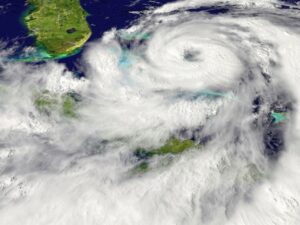In our previous post, we discussed frequent volatile weather and one of its most deadly and dangerous impacts: flooding. In this post, we’ll dive into the most recent trends of flooding and determine if its current frequencies are projected to remain stagnant or increase.
During the last century, floods claimed more in terms of number of lives and property damage than any other type of natural disaster. If we assume there has been no changes in built infrastructure or values, a 2013 article in the Journal of Flood Risk Management projected an increase of nearly 30 percent in damages from flooding alone by the end of the century.
And unfortunately, it appears that flooding frequency and severity are likely to continue. According to Nature, the recent rise of a statistically noteworthy positive trend in the risk of great floods is consistent with results from a climate model, and that model suggests that the trend will continue. Therefore, federal, state and local governments and agencies must be vigilant and prepared.
In order to prepare for such frequencies and severities of these devastating disasters, public safety officials must use accurate and informative real-time data to gain a realistic idea of conditions. This level of improved visibility that accurate data provides will lead to better informed decisions, allowing officials to determine the right answers, faster.
Traditionally, public safety officials needed to review data from a few different sources to gain accurate information on the two key factors that determined flood conditions — flooding parameters and weather forecasts. Now new technology from Schneider Electric presents all this information in an integrated dashboard that provides an easy to understand, real-time snapshot of the environment, taking all of the guess work out of the equation.
The three most crucial parameters that need to be monitored during a potential flood are water level, tide prediction and wave height. Whenever any of these crosses a critical threshold (based on parameters set by public safety managers), alerts are sent to notify them of the potential threat.
In our next blog post, we’ll go into depth on the three most critical parameters that need be monitored during a potential flood and why weather forecasting is crucial.
For a free download of our new white paper, “The Effects of Climate Change on Flooding”, click here.



